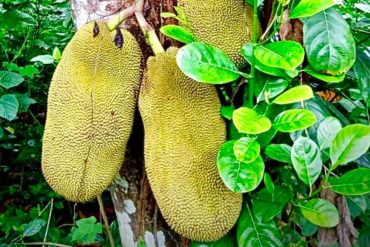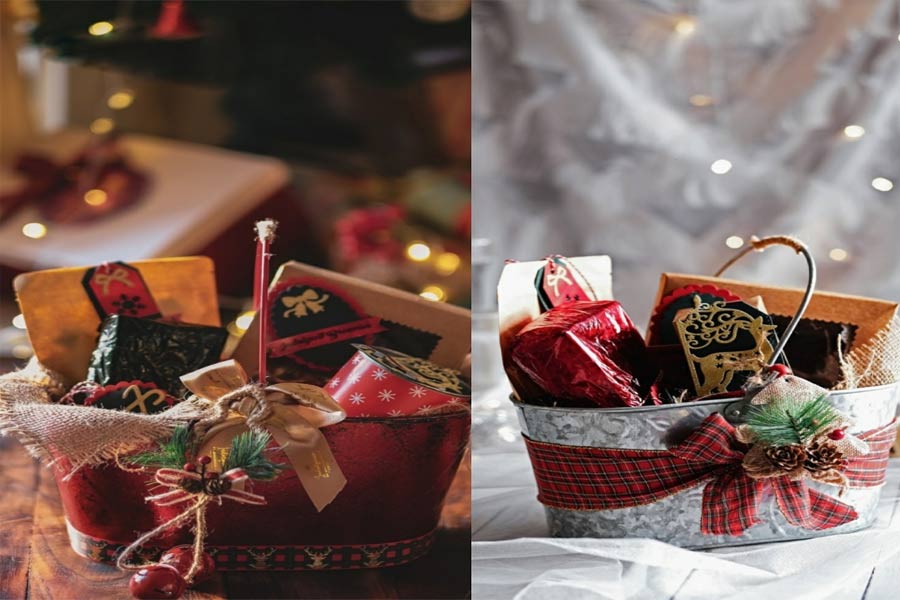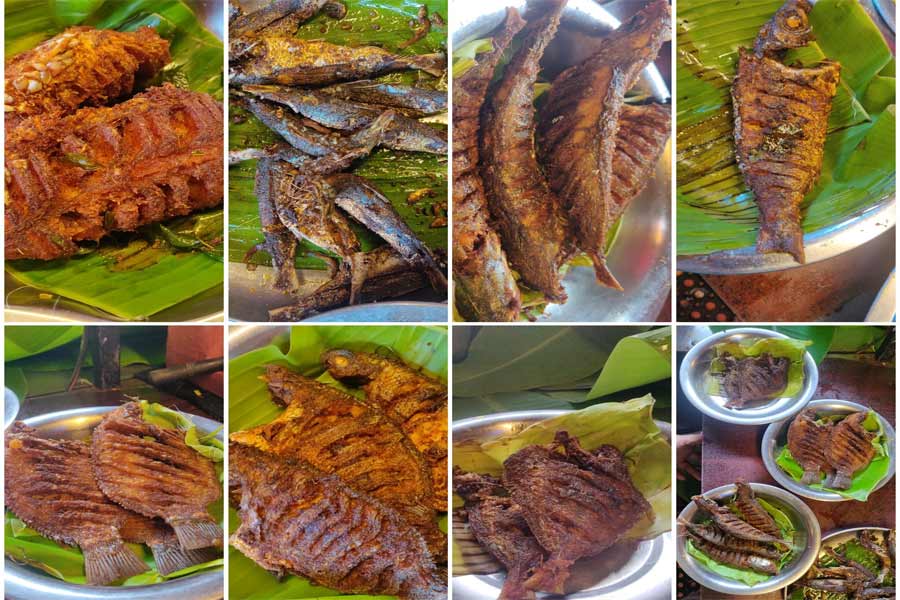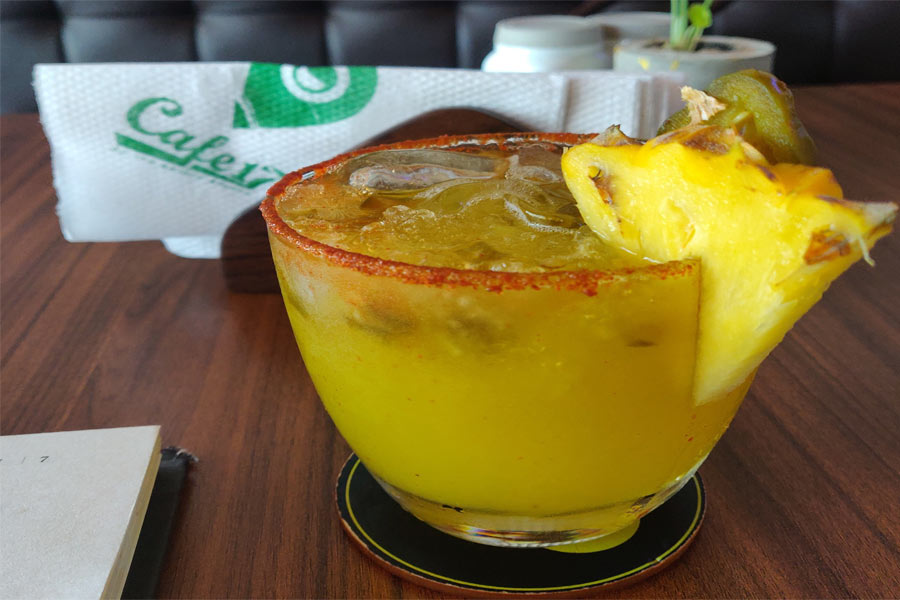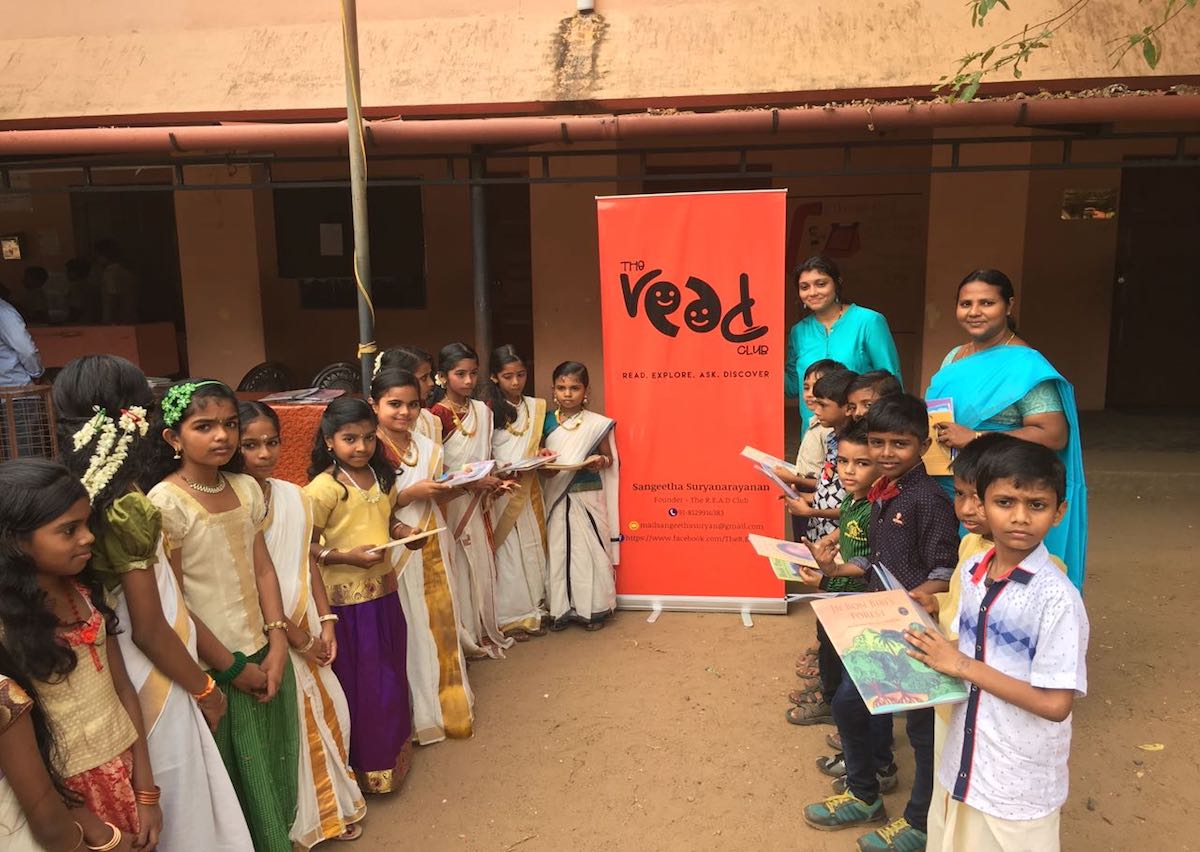I stand at the Costco counter in utter confusion: Chuck; rib; round; flank; short plate; brisket; shank; ground; stew; pot roast; loin; sirloin; tenderloin—and let out a huge sigh; life was so much simpler when it was just beef.
Back home, during my childhood, Sunday mornings always started with a visit to the butcher’s shop. You had to be there early enough to get the best parts. The stall was rudimentary: Four coconut poles to balance the thatched roof; a bench that has seen far better days; hooks from which hung the fresh meat. The centerpiece being the butcher’s cutting board; calling it a board would have been exaggeration that stretched too far—the base of a tree trunk, cut horizontally with remnants of years of chopping embedded, each chunk of meat that passed through must have left its imprint on it.
The butcher stood bare-chested, a thorthu mundu (loincloth) was his only piece of clothing. With his knife that was sharpened to perfection on a piece of rock, kept handy, he would expertly slice out a piece, wrap it in a large chembu (colocasia) leaf and pass it on to you.
Back home, you had to transform yourself into a contortionist. Seated on a korandi (low stool), a coconut shell turned upside down in front of you and a sharp knife balanced between your toes and the coconut shell, the chunk of meat would have to be portioned into three parts. Yes, we had different cuts in our kitchens too—fry and stew pieces were almost similar in size, the ones for cutlets and kofta (meat balls in coconut gravy) had to be minced.
The cast iron hand grinder was a wonderful mincing equipment that would churn out thick noodle-like strings of meat with its juices sealed in. As kids we fought to take turns in turning the handle of the hand grinder as fast as we could. This splendid contraption sadly gave way to the effortless modern mixer-grinder that mashes the meat into a fine paste and perfectly ruins the texture and flavor of the cutlet.
The masalas were all homemade. Red chilies and coriander seeds dried in the sun, ground in the nearby mill and stored in air tight jars, the meat masala always freshly ground—few sticks of cinnamon, cloves, cardamom and fennel seeds dry-fried and pound in a stone mortar.
The pieces of beef were washed and drained and dumped into a pressure cooker mixed with salt, freshly ground pepper and vinegar. When the whistle went off, the flame would be reduced to the lowest possible for the next 20-25 minutes. Your base was ready. The apportionment for a week’s worth of a variety of dishes was done carefully. Some pieces were taken out with water, for the stew with Appam. The lid of the cooker was kept open and the remaining pieces cooked in its gravy until almost dry. You were now ready to fry.
Beef fry was a Sunday lunch staple. Gently deep fried on wood fire for a few hours and smothered in curry leaves, the aroma was enough to quench your pangs of hunger. The stew pieces would appear accompanied with potato cubes cooked in coconut milk. Cutlets were school day lunch sides.
 Looking back, what other option did our poor mother have? Packing lunch for five kids in the morning, this was the easiest way out for her and the tastiest option for us. Hot rice with a cutlet on top and some thinly sliced onions and green chilies crushed with vinegar, stewed in the lunch box for a few hours—close your eyes and imagine the aroma that crosses your nasal cavities when you open that steel box. A ship can sail in my mouth even today.
Looking back, what other option did our poor mother have? Packing lunch for five kids in the morning, this was the easiest way out for her and the tastiest option for us. Hot rice with a cutlet on top and some thinly sliced onions and green chilies crushed with vinegar, stewed in the lunch box for a few hours—close your eyes and imagine the aroma that crosses your nasal cavities when you open that steel box. A ship can sail in my mouth even today.
The grinding mills started disappearing as we progressed into a modern society and as our lives turned busy. The brand-less powders came first; corporate brands took over the market later. We were sold on the conveniences, and let us admit, life was made a lot easier. And the dishes turned a little less tasty.
There are certain trade secrets that could make or break your beef. The cardinal rule is to stick to coconut oil. Use any other oil at the peril of your taste buds. Found some freshly made ones in your neighborhood? Grab it, that aroma is the proof. Next, curry leaves. Does your neighbor have a plant at home? Woo him in abandon. It’s always a better option than the pesticide-sprinkled ones that come from the neighboring state.
Thirdly, Pepper should always be freshly ground—coarsely, not powdered. Fourth and the most crucial secret—make friends with that kallu shaap (Toddy Shop) owner, or even better, the local toddy tapper. Nothing can beat the solid punch of pure, unadulterated kallu vinegar.
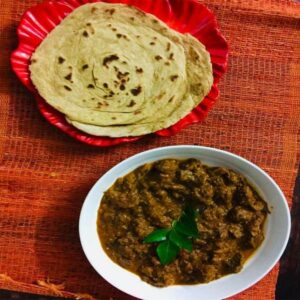 You get almost everything from home here in the United States. Chakka, maanga, thenga, beef, fish—even kumbilappam. Perfectly packed in air vacuumed pouches, all you have to do is punch a few holes on the plastic lining on top and microwave it.
You get almost everything from home here in the United States. Chakka, maanga, thenga, beef, fish—even kumbilappam. Perfectly packed in air vacuumed pouches, all you have to do is punch a few holes on the plastic lining on top and microwave it.
Yet, on some weekends, I peel some shallots, add red chilies and garlic pods and crush it on my chopping board with a rolling pin. Then I take out a couple of cinnamon sticks, add a few more pieces of spices, roast it and make an attempt at grinding it. The cheena chatti, which has travelled from home, is heated up, coconut oil dunked in and I chop a couple of onions and take 3-4 sprigs of curry leaves.
I watch the onions slowly turning brown and the curry leaves wilting; yearning for the vinegar that came in bottles straight from toddy shops, I open the lid of a bottle of red wine vinegar made in Italy and scoff at the thought, yet add it to the evenly shaped machine chopped beef pieces from Costco. Beef fry on a Sunday morning. Licking my fingers, inhaling the fragrance of curry leaves and trying to catch a whiff of my past. Into my soul.

